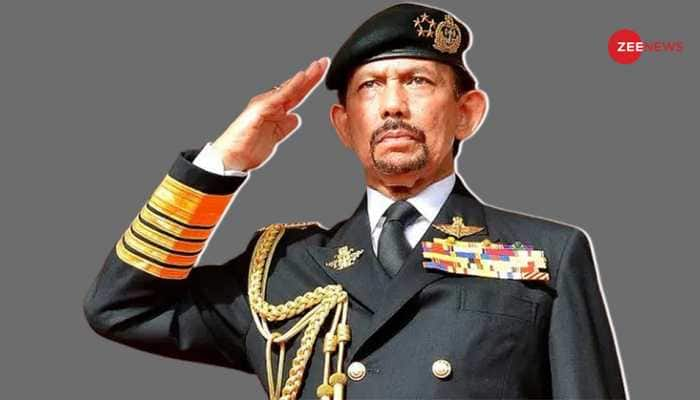Chinese press conferences of past 2 decades show a paradigm shift in Beijing's diplomatic narratives
During Hu Jintao’s reign, Taiwan was the only confrontational topic between the two countries, but during the Xi Jinping period, there was a multiplication of these issues leading to a tense atmosphere that did not leave much room for cooperation.
- This diplomatic move away from ‘low profile’ towards ‘assertiveness’ was also reflected in the press conferences the Chinese Foreign Ministry held
- There was positive sentiment towards the United States which peaked in the year 2011, the last full year for Hu Jintao
- Since Xi Jinping came to office, sentiment towards the US has been worsening at an alarming speed
Trending Photos
) Image courtesy: Reuters
Image courtesy: Reuters New Delhi: If we study the press conferences conducted during the tenures of Hu Jintao and Xi Jinping, it has been found that under the leadership of Hu Jintao, China mainly focused on economic cooperation with its neighbours and other nations and confrontational topics were rather avoided. This helped the Communist nation to maintain good ties with most of the countries, but all this changed drastically under the leadership of Xi Jinping as China is being seen taking a harder stance over multiple issues and confrontational topics have multiplied.
China’s shift from ‘low profile diplomacy’ to ‘assertiveness’ under President Xi Jinping has made Beijing's interactions with other nations confrontational in nature and reduced the scope of mutual cooperation.
Recently, a review essay was published in the Journal of Chinese Political Science titled ‘Studying Chinese Foreign Policy Narratives: Introducing the Ministry of Foreign Affairs press Conference Corpus’. The essay, authored by Michal Mochtak and Richard Turcsanyi, includes almost two decades of Chinese foreign policy discourse from 2002-2020. The data set created by the two authors comprises the study of Chinese press conferences over the last two decades that provided readers with a unique glimpse into the diplomatic narratives of the Chinese government.
The essay takes two case studies- One is related to China’s demeanour towards the US during the presidency of Hu Jintao and Xi Jinping and second case study tried to understand the narratives of the Chinese government in regards to the South China Sea during that same time frame.
Chinese society is very closed off, and as a result, its politics are very opaque and hard to discern for outsiders. With such a closed-off society, China’s regular press conferences provide a unique glimpse into the official stance of the Chinese government and in which direction the Chinese Communist Party intends to take China.
Press Conferences in China are conducted in a western-style format, wherein journalists are free to ask questions and thus allowing them to serve as agenda setters. But the answers provided to these journalists are selective and scripted, making the conferences essentially echo chambers for the thoughts and ideas of the Chinese government.
In addition, official transcripts provided by the Chinese Foreign Ministry are heavily censored and controversial questions are unlikely to even make it on the official transcripts. Only the message that the Ministry wants to portray will make it to the transcripts.
Case Study #1
The US has always played a major role in China’s foreign policy, whether it be during the reign of Hu Jintao or Xi Jinping. The US being arguably the leader of the liberal democratic world was the main rival for Communist China. As such, it has always played a prominent role but China’s demeanour towards the US has changed significantly between China during Hu Jintao’s leadership and during China led by Xi Jinping.
During their study, the authors took note of every mention of the US or a closely related term (like names of Presidents and secretaries of state) and used these instances to determine difference in the narratives of Chinese leadership, Hu Jintao (2002-2012) and Xi Jinping (2012-2020).
In general, the authors discovered that under the leadership of Hu Jintao China followed a ‘low profile diplomacy’ policy. But shortly after taking over, Xi Jinping from the 2012’s onwards started growing his power and influence domestically and as a result, China became more ‘assertive’ in the international world. This drastic change marked an end to the ‘low profile diplomacy’ of China introduced by Deng Xiaoping, which was then carried on by Hu Jintao.
This move away from ‘low profile’ towards ‘assertiveness’ was also reflected in the press conferences the Chinese Foreign Ministry held. The essay showed that pre-2012 there was positive sentiment towards the United States which peaked in the year 2011, the last full year for Hun Jintao. But since Xi Jinping came to office, sentiment towards the US has been worsening at an alarming speed with present discourse showing sentiment to be the lowest it’s ever been. This conclusion is in line with US-China relations over the last 20 years.
The study of Chinese press conferences also revealed that pre-2012 the communications between the US and China were dominated by US-China bilateral relations, Taiwan and the situation on the Korean peninsula. Post-2012 there were several central topics added to the discourse between the two countries, as the events in the South China Sea and Hong Kong.
During the presidency of Hu Jintao, US-China communication focused on cooperation, especially in the economic realm, with confrontational topics like Taiwan only coming up rarely. On the other hand, during the Xi period, there was a drastic rise in confrontational topics, this created for a generally more tense relationship between the US and China.
During Hu Jintao’s reign, Taiwan was the only confrontational topic between the two countries, but during the Xi period, there was a multiplication of these issues leading to a tense atmosphere that did not leave much room for cooperation.
Case Study #2
The second case study focused on how China’s official discourse changed over time in regards to the South China Sea between 2002-2020. The example of the South China Sea is a great way to study the difference between Hu Jintao and Xi Jinping because this was the area where China’s shift from ‘low profile diplomacy’ to ‘assertiveness’ was first noticed.
During the 2000s the mentions of the term ‘South China Sea’ remained low and only began picking up in 2011 and reached an all-time high during 2016 when Xi was in power. Even after the peak in 2016, the mentions of the South China Sea have remained higher than what it was during the 2000s.
In regards to the South China Sea, the most frequently discussed claimant was Philippines and Vietnam being discussed 181 and 41 times respectively. The US was the only outside actor that was discussed extensively, being referred to over 200 times between 2002-2020. The extensive number of times that the US was discussed shows that the South China Sea dispute is not only about territory but also a political battleground for US-China.
During the leadership of Hu Jintao, China only brought up the topic of the South China Sea after the actions of other countries like the Philippines and Vietnam. During its discourse China mentioned that it claimed sovereignty over the islands and the surrounding waters of South China Sea and urged countries to cease their actions. While using these harsh words, China maintained diplomatic and even muted response with going so far as to add the word ‘hopes’ in its statements. During this time China also made it clear that it was willing to cooperate with other countries in an effort to explore the South China Sea.
After the ascension of Xi Jinping, China’s stance in regards to the South China Sea had significantly hardened and it even began mentioning it more in its official discourse.
Chinese society is very closed off and secretive. Due to the nature of the Chinese Communist Party and how it governs the country, its neighbours and other nations are often kept in the dark about its intentions, goals and strategies. Nations and diplomats can only speculate whenever China takes any action or unveils a project and this makes those involved with China anxious and apprehensive.
Chinese diplomats are also extremely different from diplomats from other liberal democratic countries wherein they strictly follow the party line and are not open to interpersonal connections with diplomats of other nations, a relatively common practice that allows diplomats to meet and discuss informally.
Chinese press conferences given by the Ministry of Foreign Affairs are also very scripted and rarely allude to the true intentions of the Chinese Government. Being true to the trend of being a secretive nation, there is also not a lot of data present regarding China and its activities (at least internal data). Therefore, scholars and diplomats have to resort to obscure and less used methods to understand China and Beijing’s intentions. A pair of scholars recently tried to bridge this gap in our understanding of China’s foreign policy and its deeper intentions by painstakingly researching and analyzing 23,000 question and answers during Foreign Ministry press conferences between 2002-2020.
Stay informed on all the latest news, real-time breaking news updates, and follow all the important headlines in india news and world News on Zee News.
Live Tv







)
)
)
)
)
)
)
)
)
)
